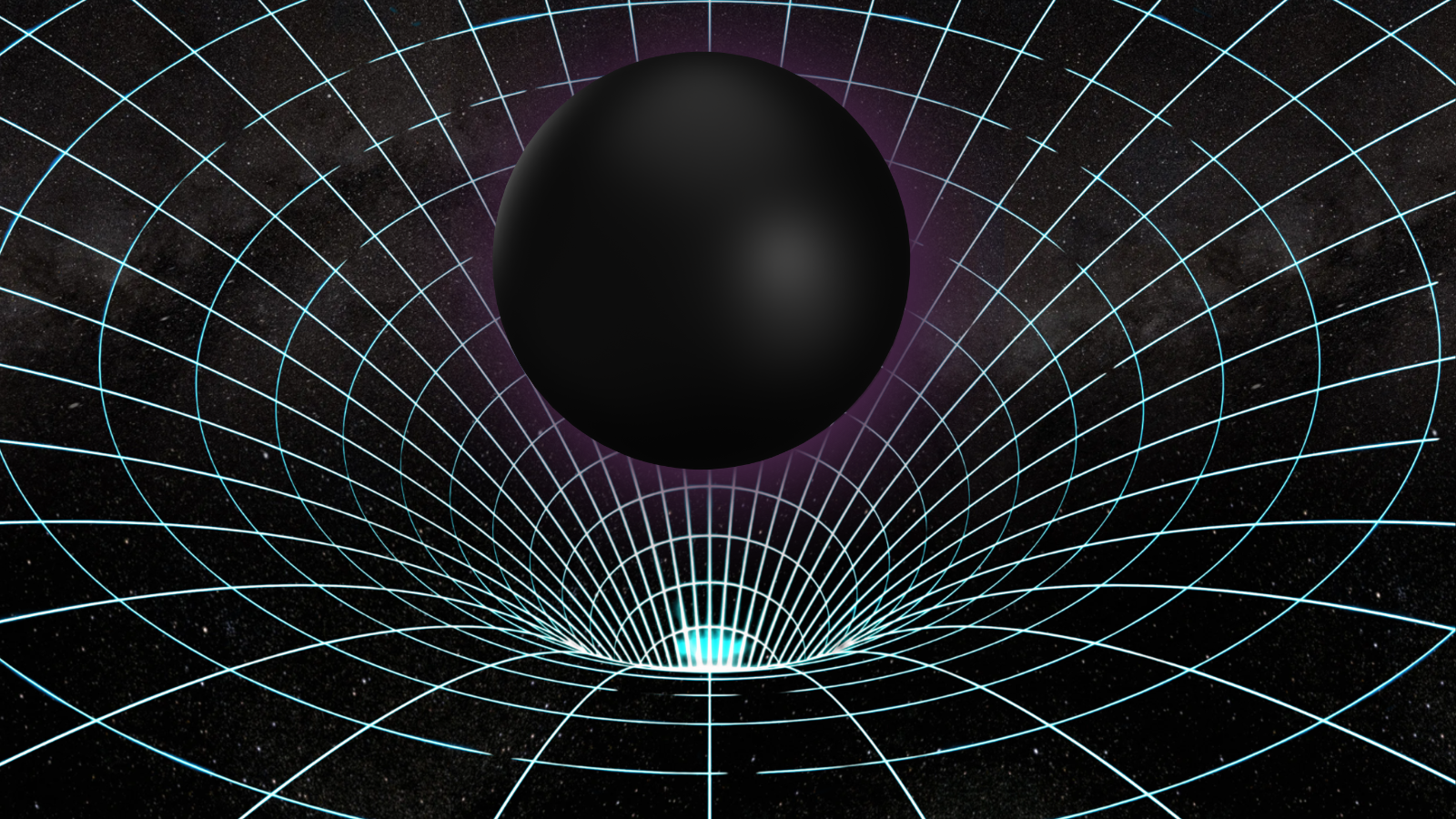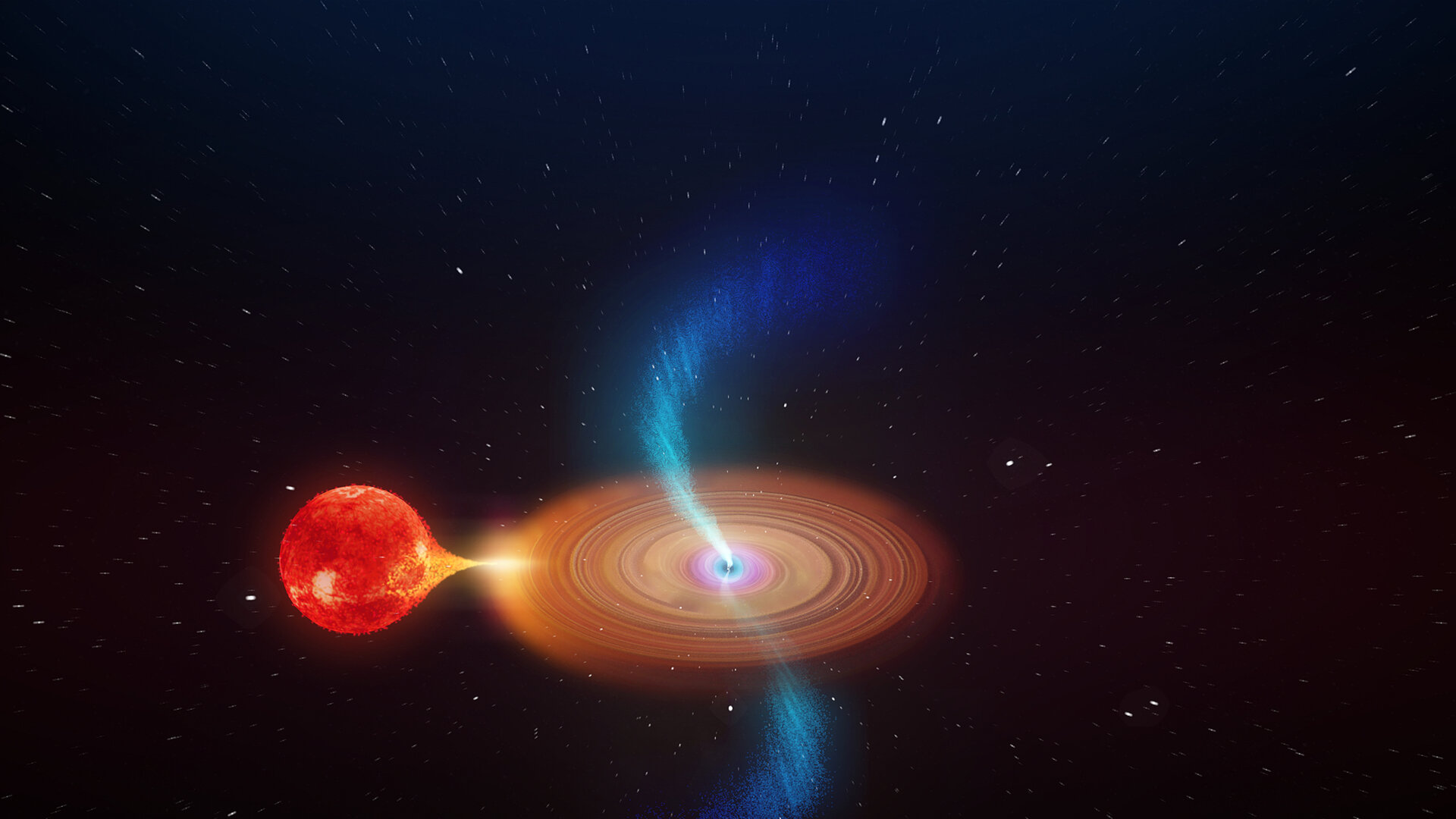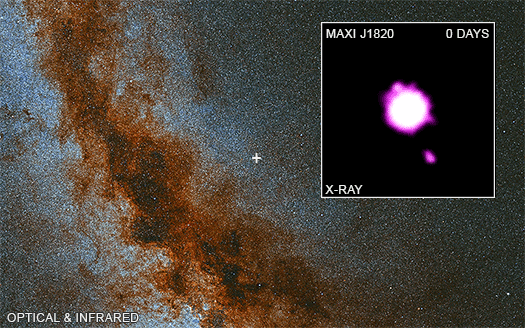Right again, Einstein! Scientists find where matter 'waterfalls' into black holes
"Think of it like a river turning into a waterfall — hitherto, we have been looking at the river. This is our first sight of the waterfall."

Scientists have confirmed, for the first time, that the very fabric of spacetime takes a "final plunge" at the edge of a black hole.
The observation of this plunging region around black holes was made by astrophysicists at Oxford University Physics, and helps validate a key prediction of Albert Einstein's 1915 theory of gravity: general relativity.
The Oxford team made the discovery while focusing on regions surrounding stellar-mass black holes in binaries with companion stars located relatively close to Earth. The researchers utilized X-ray data collected from a range of space telescopes, including NASA's Nuclear Spectroscopic Telescope Array (NuSTAR) and the International Space Station's mounted Neutron Star Interior Composition Explorer (NICER).
This data allowed them to determine the fate of hot ionized gas and plasma, stripped from a companion star, taking a final plunge at the very edge of its associated black hole. The findings demonstrated that these so-called plunging regions around a black hole are the locations of some of the strongest spots of gravitational influence ever seen in our Milky Way galaxy.
Related: Does a cosmic 'glitch' in gravity challenge Albert Einstein's greatest theory?
"This is the first look at how plasma, peeled from the outer edge of a star, undergoes its final fall into the center of a black hole, a process happening in a system around 10,000 light years away," team leader and Oxford University Physics scientist Andrew Mummery said in a statement. "Einstein's theory predicted that this final plunge would exist, but this is the first time we’ve been able to demonstrate it happening.
"Think of it like a river turning into a waterfall – hitherto, we have been looking at the river. This is our first sight of the waterfall."
Breaking space news, the latest updates on rocket launches, skywatching events and more!
Where does the black hole plunge come from?
Einstein's theory of general relativity suggests that objects with mass cause the very fabric of space and time, united as a single four-dimensional entity called "spacetime," to warp. Gravity arises from the resulting curvature.
Though general relativity operates in 4D, it can be vaguely illustrated through a rough 2D analogy. Imagine placing spheres of increasing masses onto a stretched rubber sheet. A golf ball would cause a tiny, almost imperceptible dent; a cricket ball would lead to a larger dent; and a bowling ball a massive dent. That's analogous to moons, planets and stars "denting" 4D spacetime. As an object's mass increases, so does the curvature they cause, and thus, their gravitational influence increases. A black hole would be like a cannonball on that analogous rubber sheet.
With masses equivalent to tens, or even hundreds, of suns compressed into a width around that of Earth, the curvature of spacetime and the gravitational influence of stellar-mass black holes can become quite extreme. Supermassive black holes, on the other hand, are a whole other story. They're hugely massive, with masses equivalent to millions or even billions of suns, dwarfing even their stellar-mass counterparts.
Returning to general relativity, Einstein suggested this curvature of spacetime leads to other interesting physics. For instance, he said, there must be a point just outside the boundary of the black hole at which particles would be incapable of following a circular or stable orbit. Instead, matter that enters this region would plunge toward the black hole at near-light speeds.
Understanding the physics of matter in this hypothetical plunging region of a black hole has been a goal of astrophysicists for some time. To address this, the Oxford team looked at what happens when black holes exist in a binary system with an "ordinary" star.
If the two are close enough, or if this star is slightly puffed out, the gravitational influence of the black hole can pull away stellar material. Because this plasma comes with angular momentum, it can't fall straight to the black hole — so, instead, it forms a flattened spinning cloud around the black hole called an accretion disk.
From that accretion disk, matter is gradually fed to the black hole. According to models of feeding black holes, there should be a point called the innermost stable circular orbit (ISCO) — the last point at which matter can stay stably rotating in an accretion disk. Any matter beyond this is in the "plunging region," and it begins its unavoidable descent to the maw of the black hole. The debate about whether this plunging region could ever be detected was settled when the Oxford team found emissions from just beyond the ISCO of accretion disks around a Milky Way black hole binary called MAXI J1820+070.
Located around 10,000 light-years from Earth with a mass of around eight suns, the black hole component of MAXI J1820+070 is pulling material from its stellar companion while blasting out twin jets at around 80% the speed of light; it's also producing strong X-ray emissions.
The team found that the X-ray spectrum of MAXI J1820+070 in a "soft-state" outburst, which represents emission from an accretion disk surrounding a rotating, or "Kerr," black hole — a full accretion disk, including the plunging region.
The researchers say this scenario represents the first robust detection of emission from a plunging region at the interior edge of a black hole accretion disk; they term such signals as "intra-ISCO emissions." These intra-ISCO emissions confirm the accuracy of general relativity in describing the regions immediately around black holes.
To follow up on this research, a separate team from Oxford's Department of Physics is collaborating with a European initiative to build the Africa Millimeter Telescope. This telescope should enhance scientists' ability to capture direct images of black holes and allow the plunging regions of more distant black holes to be probed.
"What is really exciting is that there are many black holes in the galaxy, and we now have a powerful new technique for using them to study the strongest known gravitational fields," Mummery concluded.
The team's research is published in the journal Monthly Notices of the Royal Astronomical Society.

Robert Lea is a science journalist in the U.K. whose articles have been published in Physics World, New Scientist, Astronomy Magazine, All About Space, Newsweek and ZME Science. He also writes about science communication for Elsevier and the European Journal of Physics. Rob holds a bachelor of science degree in physics and astronomy from the U.K.’s Open University. Follow him on Twitter @sciencef1rst.


